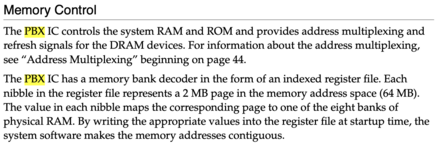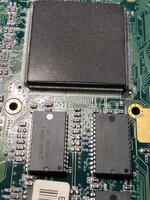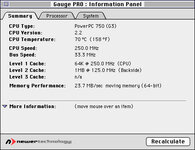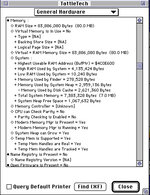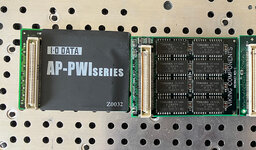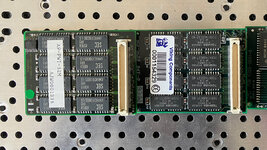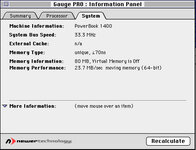Trash80toHP_Mini
NIGHT STALKER
If both your cards are 24MB your donor board appears to be exhibiting an improved reaction the behavior of the 133MHz version mentioned in the everymac advisory in your IP. This now leads me to the 166' Developer Note.
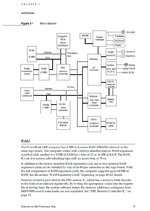
Can you determine and compare the production dates of the logic boards and the PBX Bus Bridge/Memory Controllers on your two boards?
WAGs: the donor is an early production unit a/o PBX (underside of board directly beneath the CPU card connectors.) is an earlier version?
Wondering if Apple fixed the 133's boot memory failure for the most part, but didn't quite fix the memory system issue of the 133 entirely on early production boards? Apple did a lot of "quiet replacements/upgrades" of failed systems (PB100 in my case) when they came in for service.
Comparatively few of the early 166 units would have immediately been upgraded past stock memory. Those that were likely had memory cards transferred from 133MHz units. Memory was very expensive in the backwhen, so full loadouts with a pair of 24MB cards were likely very rare.
Dunno, take a look.
edit: I'll bet a shiny nickel that the donor board works just fine with a 32MB/16MB combo?

Can you determine and compare the production dates of the logic boards and the PBX Bus Bridge/Memory Controllers on your two boards?
WAGs: the donor is an early production unit a/o PBX (underside of board directly beneath the CPU card connectors.) is an earlier version?
Wondering if Apple fixed the 133's boot memory failure for the most part, but didn't quite fix the memory system issue of the 133 entirely on early production boards? Apple did a lot of "quiet replacements/upgrades" of failed systems (PB100 in my case) when they came in for service.
Comparatively few of the early 166 units would have immediately been upgraded past stock memory. Those that were likely had memory cards transferred from 133MHz units. Memory was very expensive in the backwhen, so full loadouts with a pair of 24MB cards were likely very rare.
Dunno, take a look.
edit: I'll bet a shiny nickel that the donor board works just fine with a 32MB/16MB combo?
Last edited:

